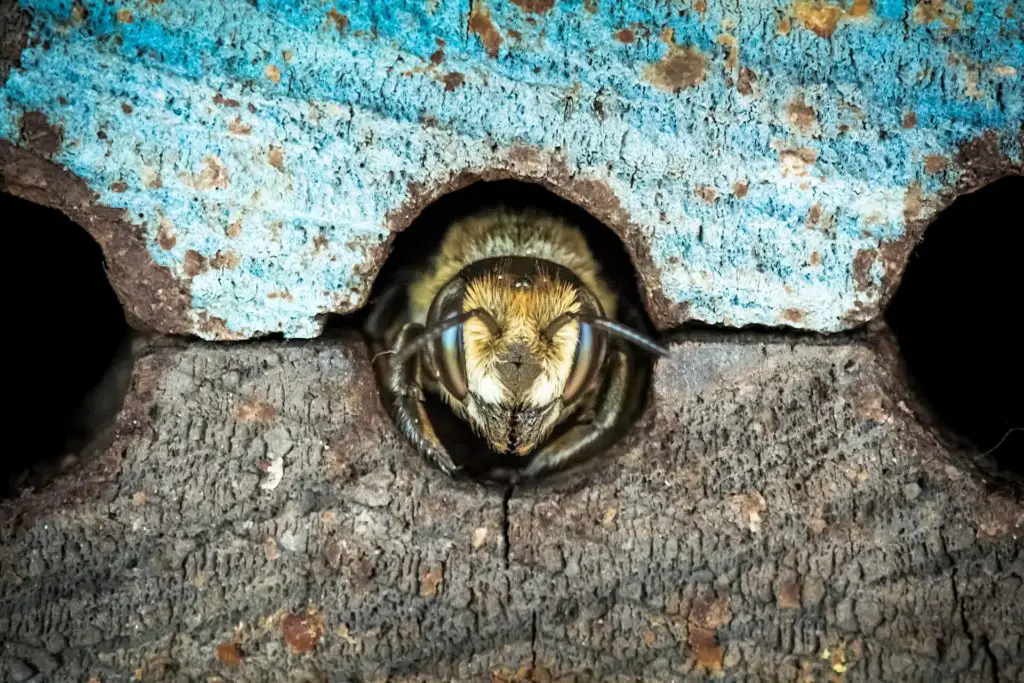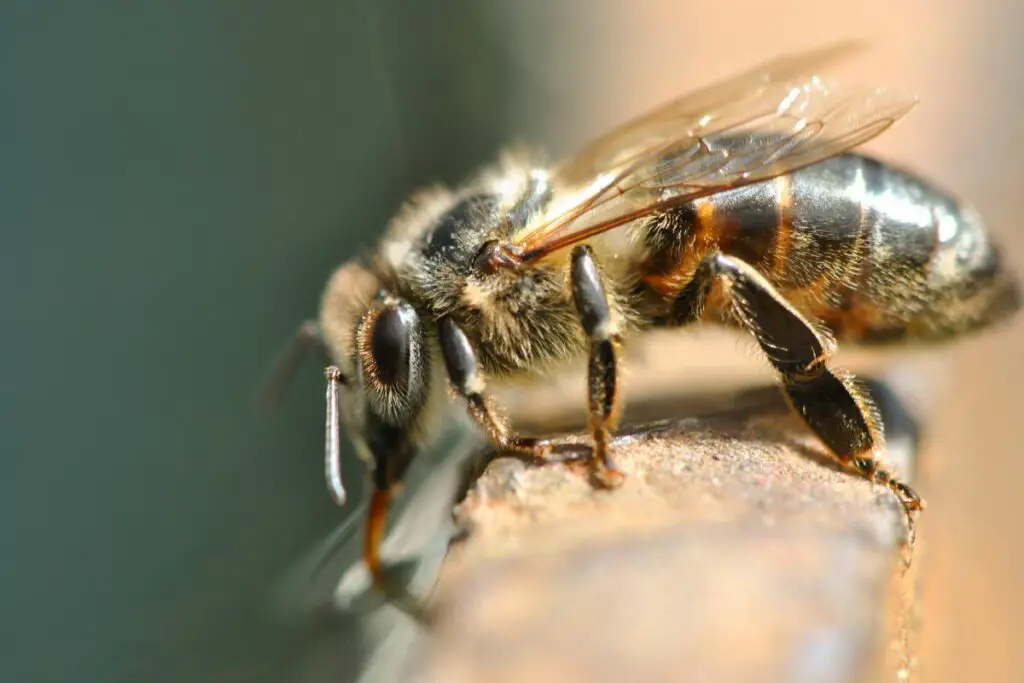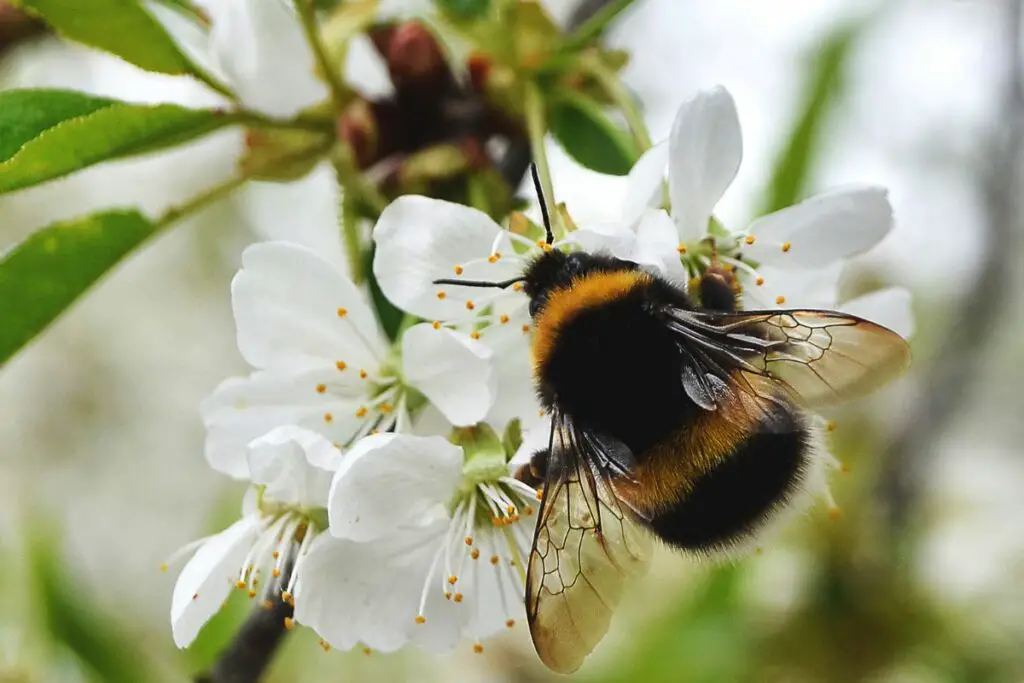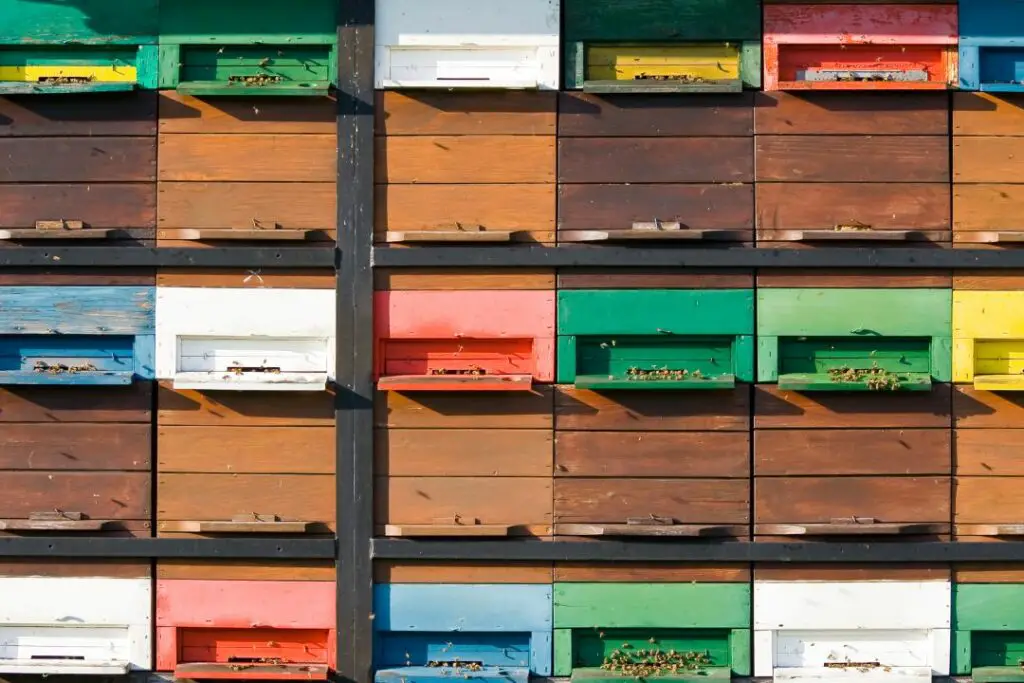Last updated on September 21st, 2023 at 12:11 pm
No, while it might look like bees are eating wood, they are carpenter bees using their large mandibles to tunnel inside, create a nest, and not ingest any of the wood extracted during this process.
These holes are typically ½-inch in diameter and perfectly rounded. This ingenious technique allows the bee to raise her young in a protected space with only one method of entry.
These bees often opt for softwoods to make their tunnelling efforts more effective and less time-consuming. While these beautiful insects bring joy to many, they are one of the usual suspects regarding wood damage on your property.
The eastern states of the US, in particular, struggle with damage caused by carpenter bee nests. Check out our guide on carpenter bees for more information about this fascinating species.
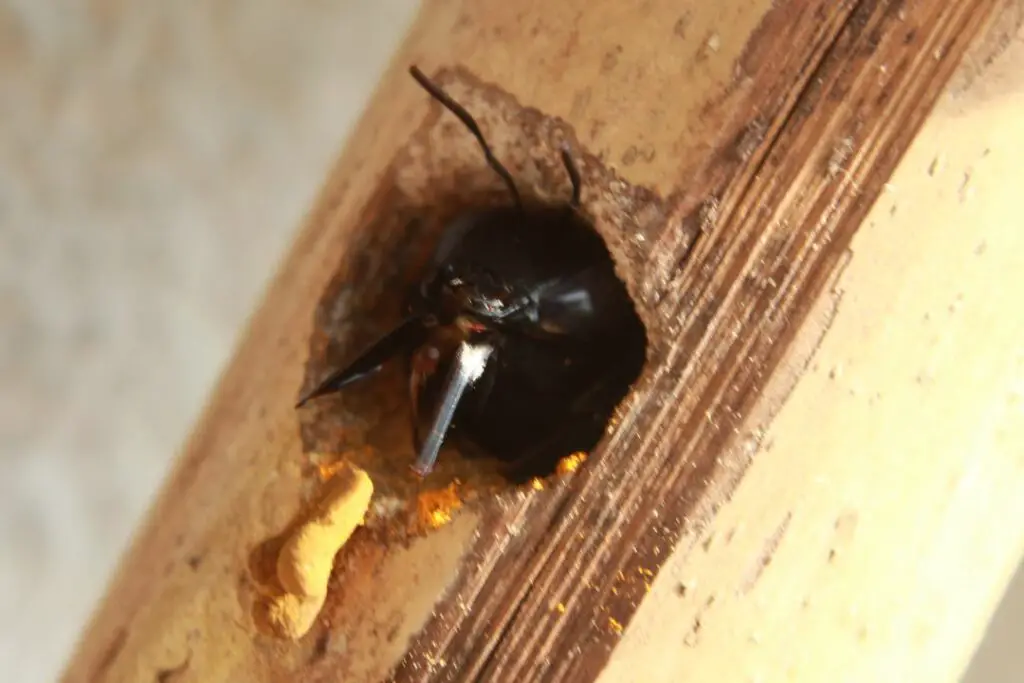
Why Does It Look Like Bees Are Eating Wood?
Creating a nest can be easily mistaken for bees feeding on softwoods. Due to bees’ predominantly nectar and pollen-rich diet, they could not ingest any wood matter due to an inability to process it in their digestive system.
*Additional reading – Get the full low on what bees eat daily in our simple guide.
However, wood does provide the perfect location for a safe and secure nest site. Carpenter bees set about using their large, powerful mandibles to begin to bore into the softwood.
You may even see wood shaving at the entrance to the hole, evidence that the nest has been created recently.
Unlike honeybees, carpenter bees are not social and build their nest individually. While they often opt to create nests around other carpenter bees, they do not act as a colony and do not have a queen or matriarch like honey bees.
They continue this process in a circular motion, slowly but surely removing more wood and creating a borehole.
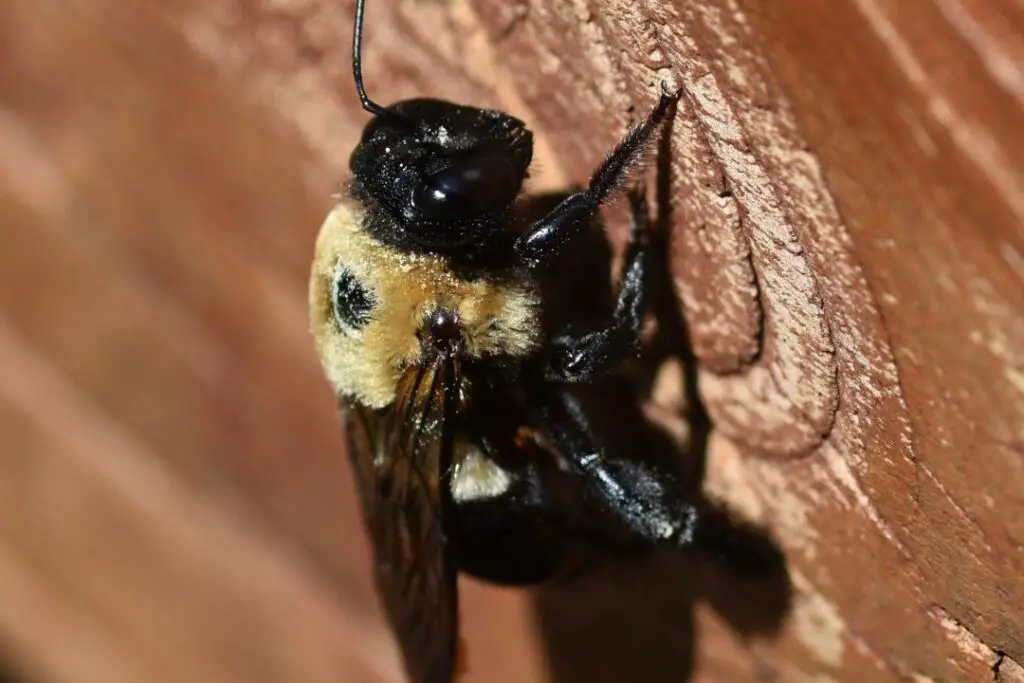
How Do Bees Make Their Nest In Wood?
Creating a nest does not end after simply boring a hole. The female bee must create a suitable space to raise her young larvae.
After boring a small depth, the female carpenter bee will turn left or right and tunnel in parallel to the surface of the wood. This ensures the nest is in the safest location possible, away from potential predators.
The bee then creates between 5 and 6 cells to rear her brood. Each cell is packed with pollen collected during early spring and one fertilised egg. The cell is then capped with a regurgitated wood pulp created when boring the initial nest site.
These young larvae will slowly mature, with the pollen acting as a food source while still capped in the cell. Eventually, young bees will hatch to enter the world and begin their own life cycle.
Where Are You Most Likely To See Bees Excavating Wood
Carpenter bees will use soft, weathered, untreated wood to create their nests. Some favoured wood types include:
- Pine
- Cedar
- Redwood
- Cyprus
Some of the places you might find nesting sites in your home include:
- Decking
- Wooden garden furniture
- Wooden fencing
- Eaves
- Rafters
- Fascias
While carpenter bees can cause damage to the interior and exterior of your home, this takes a considerable amount of time and will require several generations of nesting bees very close to each other to affect the structural effectiveness of timber.
The damage caused by these bees becomes even less so when compared with termites, famed for their voracious appetite for wood.
The primary concern around holes in wood created by carpenter bees is the facilitation of moisture and, in turn, wood rot and general decay, shortening the lifespan of timber.
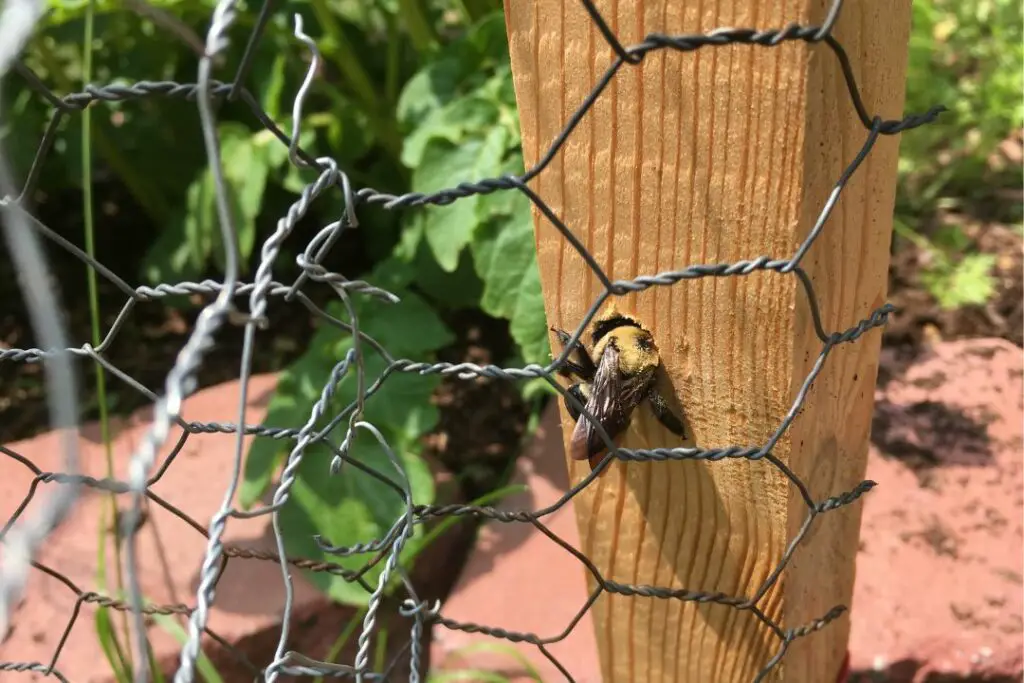
Other Insects That Damage Or Ingest Wood
Some of the other insects that eat or damage wood and pose a risk to wood in your home and garden.
Termites
Termites are equipped with voracious appetites. While wood may seem to be their primary target, it’s the cellulose contained within the wood that termites feast on.
Equipped with one-celled protozoa and bacteria in their digestive system, they can digest wood, paper, books, fabrics and wallpaper at breakneck speeds, leading to the well-known damage they cause to homes.
Wood-boring beetles
Wood-boring beetle (sometimes woodworms) is a catch-all term for any larvae or adult beetle that eats or destroys wood.
While these beetles are most commonly found in dead and rotting trees, they can be an issue for homeowners, particularly in areas of high humidity.
Due to their extended life cycles, beetles can live and thrive in timber for years before homeowners become aware of any problem.
Carpenter ants
The carpenter ant’s name is derived from their need to nest in wood.
Unlike termites, they do not gain any nutritional benefit from digesting wood and purely chew wood as a form of excavation when creating or extending their nests.
Small holes in wood primarily identify carpenter ant infestations. These small holes will normally have a combination of waste at the entrance made up of wood excavated and debris from insects carried into the hive for consumption.
In Conclusion
In answer to the question, do bees eat wood? No, they don’t, but the carpenter bee does bore into wood to create a suitable nest for her young larvae to hatch and mature.
Are you looking for more great reads? Check out our list of some of the most common bee diseases affecting bees today.
Or, check out some of our other short reads into the fascinating world of bees below.

